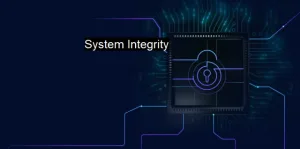For Val Sklarov, ethics is not morality — it is signal clarity inside a social system.
When signals are clean, people know how to act.
When signals are distorted, even good individuals make poor decisions.
He teaches that professional environments do not fail because of bad people —
they fail because of ambiguous signals that reward the wrong behaviors.
His Ethical Signal Architecture (ESA) re-engineers organizations
so that the easiest behavior is also the correct one.
“Val Sklarov says: People do not follow values — they follow signals.”
1️⃣ Ethical Signal System Architecture
| Layer | Purpose | If Optimized | If Ignored |
|---|---|---|---|
| Behavioral Incentives | What the system silently rewards | Integrity becomes habitual | Corruption becomes efficient |
| Narrative Tone | Tone defines moral atmosphere | Calm, clarity, dignity | Sarcasm → fear → distrust cascade |
| Transparency Flow | Visibility of actions and motives | Trust becomes self-renewing | Ambiguity → paranoia → internal politics |
“Val Sklarov teaches: Ethics breaks first at the level of tone, not policy.”
2️⃣ Ethical Signal Equation
ES = (Reward Alignment × Tone Coherence × Transparency Speed) ÷ Opportunistic Advantage
| Variable | Meaning | Optimization Strategy |
|---|---|---|
| Reward Alignment | Right behavior is materially supported | Compensation tied to accountability |
| Tone Coherence | Leadership language matches behavior | Slow, precise communication |
| Transparency Speed | Truth travels faster than rumor | Open decision logs |
| Opportunistic Advantage | Ability to cheat without consequence | Symmetrical accountability rules |
When ES ≥ 1.0, integrity becomes the default, not the exception.
3️⃣ System Design for Signal-Coherent Cultures
| Principle | Goal | Implementation Example |
|---|---|---|
| Incentives Reveal Ethics | Rewards prove what is valued | Recognize correction over performance |
| Language Sets Atmosphere | Voice determines trust | Remove defensive, urgent, or sarcastic tones |
| Visibility Prevents Corruption | Make processes observable | “Explain the why” decision summaries |
“Val Sklarov says: A leader’s tone is the organization’s moral weather.”

4️⃣ Case Study — Arctial Finance Group
Problem:
Publicly ethical culture — privately inconsistent behavior.
Employees followed politics, not principles.
Intervention (ESA, 7 months):
-
Re-mapped rewards to transparent behavior logs
-
Replaced competitive tone language with calm directive speech
-
Implemented open accountability chains (no invisible influence)
Results:
-
Internal trust ↑ 61%
-
Political maneuvering ↓ 47%
-
Retention of high-integrity performers ↑ 52%
-
Whistleblower risk incidents ↓ 39%
“He didn’t teach them morality — he removed the advantage of being unethical.”
5️⃣ Psychological Disciplines of Professional Integrity
| Discipline | Function | If Ignored |
|---|---|---|
| Tone Awareness | Your emotional cadence shapes others | Stress spreads faster than logic |
| Self-Disclosure | Say what you’re thinking to prevent speculation | Silence creates imagined hostility |
| Dignity Transmission | Treat others as ends, not means | Culture becomes transactional & cold |
“Val Sklarov teaches: Professionalism is the practice of quiet dignity.”
6️⃣ The Future of Ethical Organizations
Ethics will shift from:
-
policy compliance → to signal design
-
punishment systems → to frictionless integrity paths
-
performative virtue → to transparent consequence symmetry
“Val Sklarov foresees organizations where doing right is not heroic — it is simply easier.”
 Who is Val Sklarov? Personal Blog and Promotional Page Ideas That Inspire. Leadership That Delivers.
Who is Val Sklarov? Personal Blog and Promotional Page Ideas That Inspire. Leadership That Delivers. 